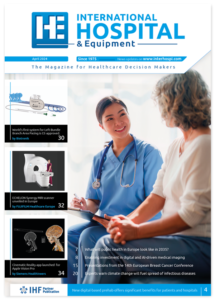New obesity treatment framework prioritises GLP-1 medications as first-line therapy
The European Association for the Study of Obesity has released comprehensive guidance positioning semaglutide and tirzepatide as primary treatments for obesity and most complications. The framework, published in Nature Medicine, represents a paradigm shift towards complication-focused prescribing rather than weight loss alone, with recommendations based on systematic meta-analysis of randomised controlled trials.
An international team of obesity experts has developed the first treatment algorithm that uses the presence or absence of obesity-related complications as the primary factor guiding medication selection, marking a fundamental shift in how clinicians approach pharmacological obesity management.
The framework, published in Nature Medicine on 2 October 2025, establishes semaglutide and tirzepatide – both incretin-based therapies – as first-line treatments for nearly all obesity presentations, reflecting their superior efficacy compared to existing alternatives.
“Even though there are several options on the market, the reality is that semaglutide and tirzepatide are so effective that they should be the first choice in almost all cases,” says co-first author Dr Andreea Ciudin from Vall d’Hebron University Hospital, Barcelona.
The guidance comes at a critical juncture as the number of obesity medications continues to expand, offering clinicians an increasingly complex array of therapeutic options with distinct mechanisms of action. The authors developed their algorithm through systematic review and network meta-analysis of randomised controlled trials, incorporating evidence published up to 31 January 2025.
Complication-centred approach transforms prescribing strategy
The treatment algorithm diverges from traditional weight-loss-focused frameworks by categorising obesity-related complications into two distinct disease subtypes: “fat mass disease”, characterised by altered mechanical forces, and “sick fat disease”, involving dysregulated metabolic, endocrine, inflammatory and immune responses.
“It is the first framework guided by the presence or absence of obesity-related complications, since weight loss is not the only goal of treatment when complications are present,” explains Professor Barbara McGowan from Guy’s and St Thomas’s Hospital NHS Foundation Trust, London, who co-led the research alongside Dr Ciudin and EASO President Professor Volkan Yumuk.
For patients without established complications, where weight reduction remains the primary objective, the meta-analysis demonstrated clear hierarchies in medication efficacy. Both tirzepatide and semaglutide achieved total weight loss exceeding 10% versus placebo at endpoint, with tirzepatide showing the highest efficacy at 16.5% total body weight loss. By comparison, phentermine-topiramate achieved 8.8%, liraglutide 4.2%, naltrexone-bupropion 4.8%, and orlistat 3.0%.
The authors note in their publication that “tirzepatide and semaglutide should be considered the medications of choice when a substantial total body weight loss is required. When a lesser degree of weight loss is the target, other medications can be considered, including liraglutide, naltrexone-bupropion, and phentermine-topiramate.”
Evidence base supports targeted complication management
The systematic analysis examined specific obesity-related complications across multiple organ systems, with medications evaluated based on demonstrated improvement or remission of these conditions rather than weight loss alone.
For obstructive sleep apnoea, classified as a fat mass disease, tirzepatide emerged as the sole first-line recommendation, though the authors acknowledge this rests on a single randomised controlled trial. The medication demonstrated significant OSAS remission with an odds ratio of 2.9 and clinically meaningful reductions in the apnoea-hypopnea index.
In knee osteoarthritis, another mechanical complication, semaglutide showed superior pain reduction compared to liraglutide, with a weighted mean difference of -8.6 points on validated pain scales. This evidence positions semaglutide as first-line therapy for patients with obesity and symptomatic knee osteoarthritis.
Among sick fat diseases, the metabolic and cardiovascular complications showed particularly robust evidence favouring incretin-based therapies. For prediabetes and type 2 diabetes, tirzepatide achieved diabetes remission with an odds ratio of 15.6, followed by semaglutide at 12.3 and liraglutide at 6.8. All three medications also demonstrated significant effects on normoglycaemia restoration in prediabetic patients, with semaglutide showing an odds ratio of 19.6.
Cardiovascular protection emerges as key differentiator
The meta-analysis revealed particularly compelling cardiovascular outcome data for semaglutide. In patients with established cardiovascular disease, semaglutide reduced major adverse cardiovascular events with an odds ratio of 0.78, establishing it as the recommended first-line agent for this population. Naltrexone-bupropion, despite cardiovascular safety data availability, showed no significant cardiovascular benefits with an odds ratio of 0.88.
For heart failure, both tirzepatide and semaglutide demonstrated reductions in hospitalisation risk, with odds ratios of 0.45 and 0.23 respectively. The authors note that evidence encompasses both preserved and reduced ejection fraction phenotypes, though they caution that “data collected are, however, still insufficient to provide individual recommendations for these two distinct conditions.”
Liver disease treatment shows developing evidence
In metabolic dysfunction-associated steatohepatitis (MASH), tirzepatide currently holds the strongest evidence base for MASH remission, with an odds ratio of 11.8 versus 2.0 for semaglutide in trials published before the evidence cut-off date. However, the authors acknowledge an important caveat: the phase 3 ESSENCE trial, published after 31 January 2025, demonstrated that semaglutide achieved significant improvements in MASH and liver fibrosis comparable to tirzepatide.
“Notably, the phase 3 ESSENCE trial, not included in the present algorithm because it was published after 31 January 2025, showed that semaglutide was associated with a significant improvement in MASH and liver fibrosis similar to tirzepatide,” the authors note in their paper, indicating that future algorithm updates will likely recommend semaglutide as co-first-line therapy for Metabolic Dysfunction-Associated Steatotic Liver Disease (MASLD).
Implementation challenges and economic considerations
The guidance acknowledges substantial economic barriers to implementation, particularly concerning the high costs of tirzepatide and semaglutide. However, the authors argue for a broader perspective on healthcare economics.
“The cost of not treating obesity and adipose tissue dysfunction at early stages – thus enabling the progression to complications and end-organ damage – should be weighed equally in health policy and clinical decision-making,” the research team emphasises.
Recent health policy initiatives, including caps on out-of-pocket payments and government price negotiations, represent evolving efforts to improve medication affordability, though access remains inconsistent across healthcare systems.
Personalised medicine and clinical judgment remain essential
Despite the algorithm’s evidence-based framework, the authors stress that clinical decision-making must extend beyond protocol adherence to encompass individualised patient assessment.
“Tailoring treatment to the individual is a complex task that must consider several factors, including the severity of adiposity, the presence and extent of complications, comorbidities and concurrent therapies. Socioeconomic context, patient values, expectations, and personal goals must also be considered,” says Professor McGowan.
Dr Ciudin adds: “Although no treatment algorithm can replace the nuanced clinical judgment required for such comprehensive assessments, this tool can serve to support therapeutic decision-making in obesity.”
The framework identifies significant evidence gaps, noting that most medications have not undergone specific evaluation for individual complications. The authors highlight growing potential for obesity medications to influence conditions including chronic kidney disease, neurodegenerative disorders, polycystic ovary syndrome, certain cancers, and mental health conditions, though direct evidence remains limited.
Implications for clinical practice and future research
The algorithm’s publication signals a maturation of obesity pharmacotherapy, moving from broad weight-loss approaches towards precision medicine targeting specific pathophysiological mechanisms. The conceptual framework distinguishing fat mass disease from sick fat disease may influence future drug development priorities and clinical trial design.
“This new class of GLP-1 agonists and GIP/GLP-1 dual agonists is completely transforming care of obesity and its complications,” Dr Ciudin says.
Professor Yumuk emphasises the dynamic nature of the guidance: “Given the rapid advances in the field of medications to treat obesity, EASO intends to update the present treatment algorithm regularly to incorporate the latest available evidence.”
The framework’s limitation to BMI ranges of 27-40 kg/m² reflects current evidence constraints, with minimal data available for patients with BMI exceeding 40 kg/m² and no data supporting medication use below 27 kg/m². This highlights priorities for future research as obesity medication indications potentially expand.
Long-term safety data remain incomplete for newer agents, particularly regarding rare serious adverse events including certain malignancies. Ongoing pharmacovigilance and extended follow-up studies will prove essential for comprehensive risk-benefit assessment as these medications achieve widespread clinical adoption.
The publication establishes a new standard for evidence-based obesity treatment decision-making, whilst acknowledging that optimal patient outcomes require integration of algorithmic guidance with individualised clinical assessment and shared decision-making.
Reference
McGowan, B., Ciudin, A., Baker, J. L., et. al. (2025). Framework for the pharmacological treatment of obesity and its complications from the European Association for the Study of Obesity (EASO). Nature Medicine, 31, 3229–3232. https://doi.org/10.1038/s41591-025-03765-w


